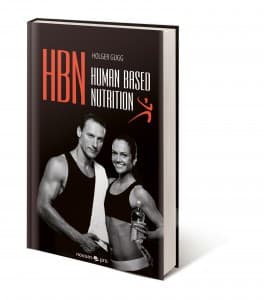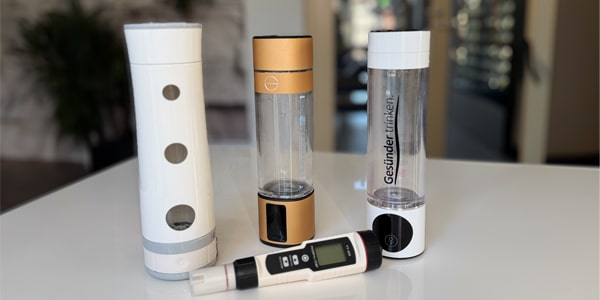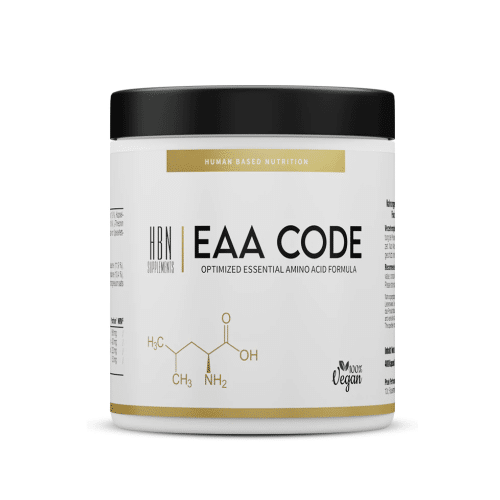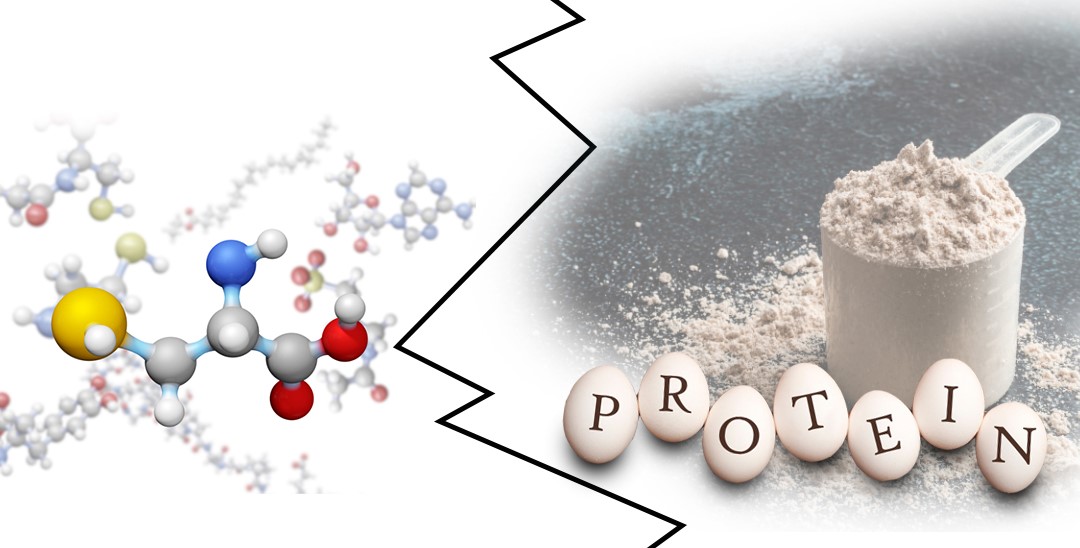The „Medium-Carb-Diet“
Dear readers,
I occupied my article intentionally with the subtitle called „The Medium-Carb-Diet“ because in this days and age it seems to be almost duty to decide for one of the both camps, either the (No) Low-Carb or the High-Carb and to live after it. Already in March 2014 the book about my nutrition concept called HBN (Human Based Nutrition) has been released. Since that time it has been priced not only with an award for literature but moreover been read thousandfold and therefore it did show several female and male athletes a well-balanced and all the same a maximum constructive way to feed themselves in a fair athletic way without being forced to highly decimate on of the three macro nutritive substances.
The right arrangement of the macro nutritive substances sure represents only a small part of what has to be determinded in a entire nutrition concept. For this reason the today’s article introduces some of the central points of Human Based Nutrition to give you dear readers a little impression.
Enjoy!
HBN – The priorities
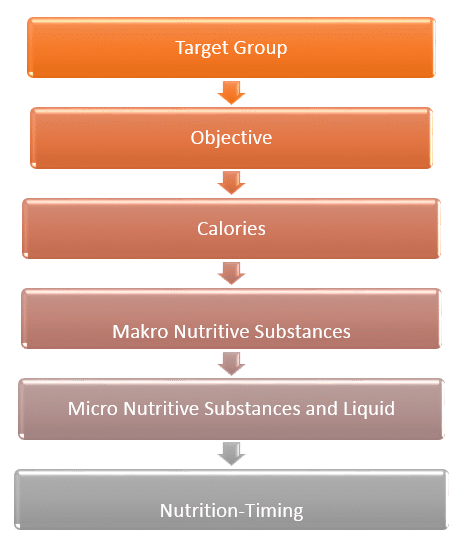
The enclosed illustration has not been published until now nowhere but it reflects very good with wich six important points every female and male athlete should deal with in the matter of nutritive improvement.
The illustration is deliberately shown as a process and not as a pyramid because there are finally no absolute priorities. Priorities means compromises and he who really intends to raise his nutrition to the best possible rank should withdraw this phrase out of his word pool. All of the six mentioned points are build on top of each other, they all have to be worked off and finally now for this reason it doesn’t matter if the amount of calories is more important than the timing of the nutritive substances (whis is a wide discussed point) or if it is perhaps still more important to concentrate rather on the micro nutritive substances than on the „macros“.
„It doesn’t matter“ – Only who takes care of all six points can claim of himself that he is following the ideal way in the matter of nutrition. How this will look individually, wether vegan, ketogenic or via Intermittend Fasting doesn’t make any difference so far – it’s about the basics.
Conclusion: six priorities represents the base of any nutritive improvement, competely independent apart from if one of the points outranks another point.
Target Group:
The first point is aimed at something that is considered differentiated for the first time in a nutritive concept for athletes with Human Based Nutrition, namely the difference between

It is incomprehensible to me why I have been one of the first who did fundamentally deal with these different target groups because they are obviously.
Women differs form men in
-
a less valuable appearance of testosterone
-
a higher appearance of estrogen
-
a less valuable part of muscle mass (about 25-30% as against 40%)
-
a different muscle fiber size and number of mitochondria
-
a worse possibility of strength exploitation
-
a less valuable basic metabolic rate
-
a higher adipose content
-
a less valuable blood volume (therefor in a worse thermo regulation)
-
a higher gain of catecholamine appearance in conjunction with sport
-
a higher triglyceride level
-
a preferred usage of fatty acids for source of energy
All these differences are fact and applies more or less strong distinctive to all women who are pleased of sporty activities. It does not only miss any principle to ignore these differences and with it give off identical nutritive suggestions for men and women but is moreover not constructive. And therefore the task in Human Based Nutrition did consist of incorporating all these factors in nutritive specifications.
With entering the Best-Ager age of which is spoken from the age of about 40 years on it then gets once more very specific for both gender. Individually different strongly pronounced we all have to deal with several changes…
-
reduced pancreatic function
-
reduced resorption activity of the bowel (proteins, fatty acids, micro nutrients)
-
reduced production of enzymes for separation of protein
-
decreased secretion of gastric acid
-
decreased creation of thyroid hormone
-
decreased production of other hormones occasionally testosterone and estrogen
-
age-related reduction of muscle mass
…just to mention a few points.
All of them forcefully necessitate specific guidlines for these target group. And again there has been no concept with suitably concrete proposals for solution in sports nutrition before the release of HBN and therefore changing this is what I made my business.
Conclusion: Several existing nutritive concepts offer accurate and partly also good guidlines but they over-simplify these certainly so that one may believe that there were no relevant differences between gender and age groups. HBN does close this gap with specific guidlines.
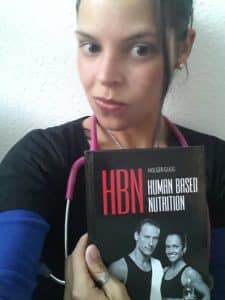
Objective
The second priority deals with the objective which can turn out completely different depending on sport and point of departure. HBN does differ on objectives in:
-
muscle buildup
-
lipid catabolism
-
anaerobic improvement in performance (such as martial arts, ball sport, team sport)
-
aerobic improvement in performance (such as distance event, marathon)
and HBN does hold specific guidlines in readiness which will be specified in the upcoming priorities.
Conclusion: The right nutritive strategy can be developped not before the objective is known. HBN offers several solution statements for all these targets.
Calories
On the calories you can in principle not reinvent the wheel. He who wants steady success in the matter of muscle buildup will have to feed on at least isocaloric or much better hypercaloric while he who intends to get rid of adipose will have to generate a lack situation to make the body releasing depot fat. Who is interested in improvement in performance will also have to feed on at least tailored to suit a market need to improve in this regard.
So far so good but now it’s getting interesting…

The problem of many people training is the arrangement respectively the interpretation of the terms „Deficit“ and „Spillover“. Unattractive adaptions which arise from too distinctive lasting calorie deficits are known from several studies. On the one hand within the adaptive thermogenesis it amounts to a reduction of the basal metabolic rate, means a decrease of the so-called NEAT (non-exercise activity thermogenesis) and also of the thermal effect based on nutrition (TEF). On the other hand hormone stands like for example testosterone, thyroid hormone, leptin, ghrelin (Growth Hormone Release Inducing), insulin and cortisol are moving and it comes to changes of the so-called „mitochondrial efficiency“ which is a matter of the regulation and activity of so-called uncoupling proteins (UCP).
What can go wrong in one direction will arrange for uncomely attending ills in the other direction. It is known from several examinations that a excessive body fat content has an negative affect on the muscle function and even foils muscular adaptions. Besides the macronutrient distribution of course first and foremost falsely planned calories are the reason for such a situation. In HBN all this knowledge has been considered and it finally ends in specific caloric guidlines for the respective target groups and objectives.
Conclusion: The calorie balance decides on success or failure of any nutritive concept. Here it is not done with „Deficit“ and „Spillover“ on it’s own also it is often propagandized. More specific guidlines are needed and will be found in HBN.
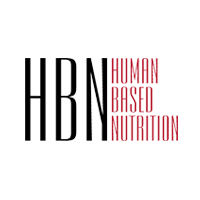
Macro Nutritive Substances
Now the next important step is the allocation of the calorie requirement to the single macro nutritive substances. We have now arrived at the big battle „High Carb vs Low Carb“. But before I will go into it a word at protein first. There is almost infinite literature on the necessary protein needs of athletes. Whereas conservative institutions like the DGE still hold fast to a presetting of 0.8g per kilogram are IOC, International Society of Sports Nutrition or American College of Sports Medicine determining amounts in the range of 1.4 till 2.0 gram protein per kilogram body weight for athletes. HBN also gears to the upper limit of these references in the matter of isocaloric and hypercaloric nutrition and even raises at hypocaloric phases to an amount of 2.5g per kilogram body weight (always based on the target weight). The higher amount of protein under predominated calorie reduction constitutes itself over a higher inclination to gluconeogenesis, a high thermal effect of protein as well as strong filling impact based on protein. Moreover 2.5g protein per kilogram body weight can be count as a safe classified quantity.
With having the right amount of protein in the baggage it’s now about the determination of necessary carbohydrates. For this it can be said that HBN chooses neither the side of Low-Carb nor the side of High-Carb but cut’s it’s own path which solely aligns on the demand. In most instances the result is a „Medium Carb“ approach. Many advocates of the one and the other nutritional form reshuffle the objectives and hence generate an irresolvable knot. It is certain that a carbohydrate conscious nutrition concerning sanitary markers represents the better way for a common person exceptionally with regard to cardiovascular markers. In contrast if it is a matter of pure loss in weight there can be determinded no explicit winner. Of course besides the weigth management and healthiness also muscle mass and performance becomes important for athletes. Studies show that depending on requirement and body composition Low-Carb will be the not always the right way. But they also show that it makes no sense to overact with the carbohydrates. As mentioned already the right way will be found in the middle and thereby in line with the necessary demand of carbohydrates. This generally consits of the following incidents:
-
stress intensity
-
time under load
-
training status of lipid metabolism
-
diet composition
-
carbohydrate supply before and during training
In HBN I exactly follow this way and I try to pretend strong individualized guidelines for carbohydrates to my supporters. In my view and also in the view of a study from Jeudenkamp an important marker for this purpose is on the one hand the glycogen capacity composed of a hepatic and muscular part and on the other hand the glycogen consumption. After determination of the right protein as well as carbohydrate amount allots the remaining rest of calories to fatty acids. For that I also give once more detailed guidelines with regard to the disposition of the weighting in terms of omega fatty acids as well as several additional important factors.
Conclusion: In consideration of the macro nutritive substances HBN chooses a fully independent individualized and demand-oriented way which seperates from all other concepts.

Micro Nutritive Substances and Liquid
For most exercisers and also in most of the other concepts it comes to an end after the optimization of the so far picked out points. And this is a big mistake if you bear in mind which adequate influence vitamins and mineral nutrients does have in our body. Vitamins are needed for several reactions of the metabolism and they act as regulation and exploitation of macro nutritive substances and mineral nutrients, are further essential for a strong immune system, are next necessary for the enzyme structure and are not least indispensable for the buildup of cells and tissue structures (just to mention some very few functions). There are two points on vitamins which are especially interesting for athletes:
-
They are counted among the essential organics (must be taken with nutrition)
-
Athletes does have an increased requirement – at least at some represantatives (Wiliams 2004)
Because of the fact that the intake of micro nutritive substances is linked to the taken amount of calories exceptionally the athletes who on any reasons feeds on hypocaloric or however strongly one-sided (vegan, ketogenic…) have to deal carefully with the matter of vitamins. The supply with macronutrients and micronutrients (mineral nutrients) is an important subject for any female and male athlete either. These nutrients are at least involved in tissue structure, in hormone synthesis, in blood cell structure, in activation of enzymes, in remaining tissue tension as well as in stimulus transmission. Even sweaty sporty activities does have the characteristic to flush out increasingly mineral nutrients (electrolytes) with liquid, especially natrium. Independent of that it is known from studies that there is a not to be sneezed at deficient supply of a certain part of the population in calcium (Bailey 2010), in magnesium (Rosanoff 2012), in jodine (Pearce 2013, Zimmermann 20112) or as well in iron (McLean 2009). In this regard the subject of liquid intake can be outstandingly picked out as a central theme as well. At this point the athletes scene is rather known for picking up too much of a good thing as too little which is why it did appear important to me in HBN to broach the issue of both the aftermath of an undersupply and oversupply with liquids and then corroborate the whole issue with the rigth guidelines.
Conclusion: To ignore micro nutritive substances and the right intake amount of liquids at the matter of nutrition is like mounting two good and two bad tires on a race car. You can not reach minimum times with it and therefore explanations on this can be found in HBN.
Nutritive Substances Timing
The last point on the priorities list deals with the timing of nutritive substances and thereby with a most hotly debated subject at all. While there meanwhile exists unity as far as possible that we do not have to ingest proteins every two to three hours and that carbohydrates don’t presents a problem if taken after 18 o’clock in certain situations there is a divergence of opinion on the selective input of nutritive substances about training. There is given no wholly-owned relevance for all athletes in training because parameters like workout intensity, workout volume, workout duration as well as other food habits are affecting the result. Nevertheless with HBN I argue for a selective workout nutrition based on several researches into glycogen resynthesis, proteolysis, protein structure and into real muscle growth. As well in Human Based Nutrition I hold an interesting approach for the arrangement of the breakfast in readiness which does fundamentally differ from the guidlines of „old school bodybuilding“.
Conclusion: Since a great deal of all female and male athletes can benefit from a selective timing of marco nutritive substances for this HBN does also provide theoretical basics as well as practical guidlines which will turn out diefferently depending on traget group and objective
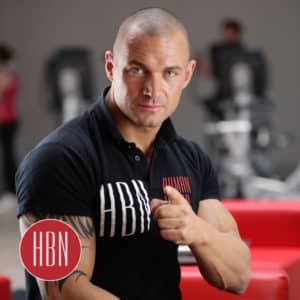
Summary
I hope I could deliver you a little insight into my nutrition concept and therewith on my approaches for the arrangement of the nutrition of athletic involved people. Nutrition is definitely a subject which should be dealt with more accurate – most of your athletic success a
s well as your lifelong healthiness does depend thereof.
With sporty regards
Holger Gugg
BUY THE GERMAN VERSION OF HBN „HERE“ or „CONTAT US“ FOR ENGLISH-HBN-NUTRITION-COACHING










